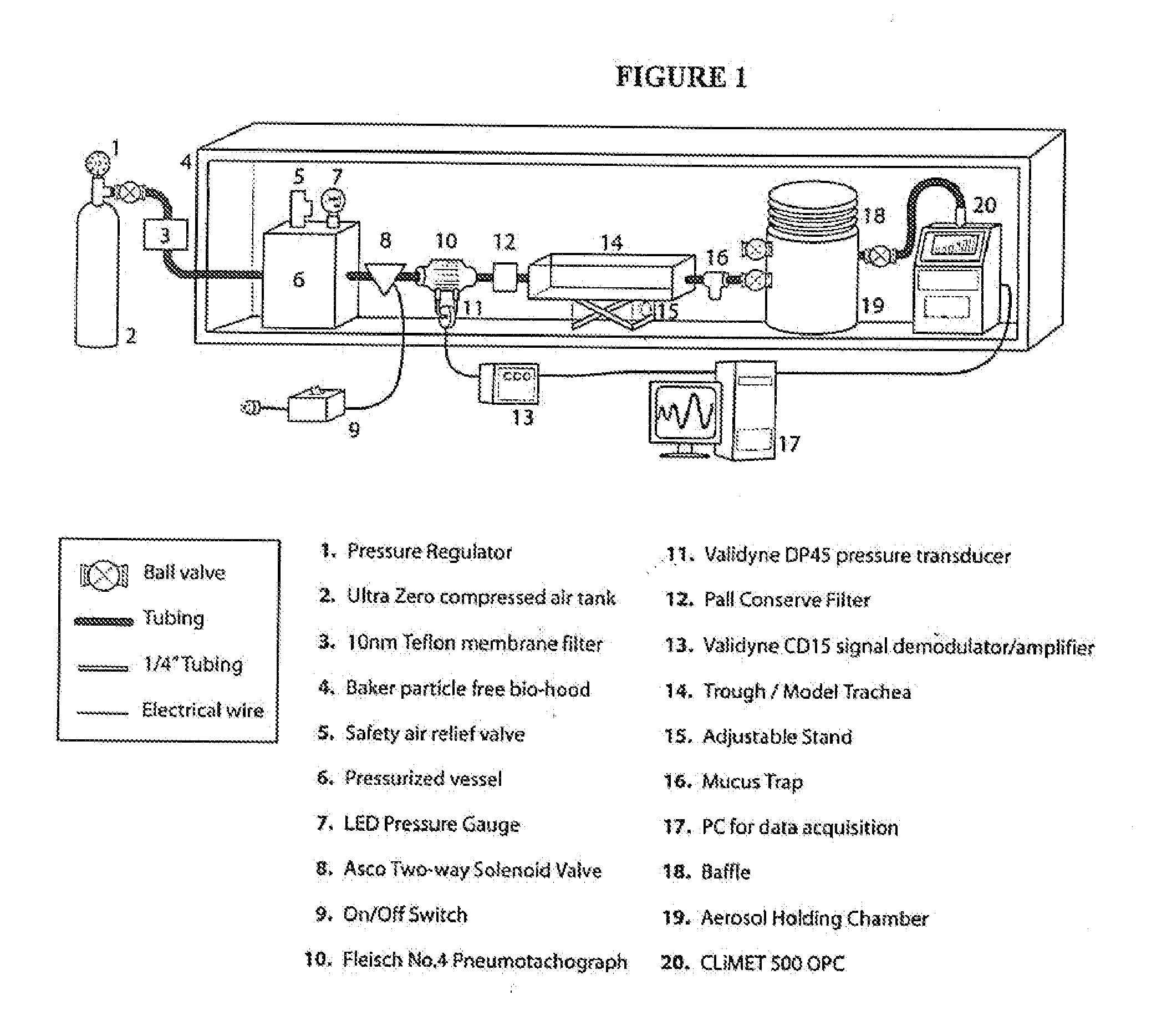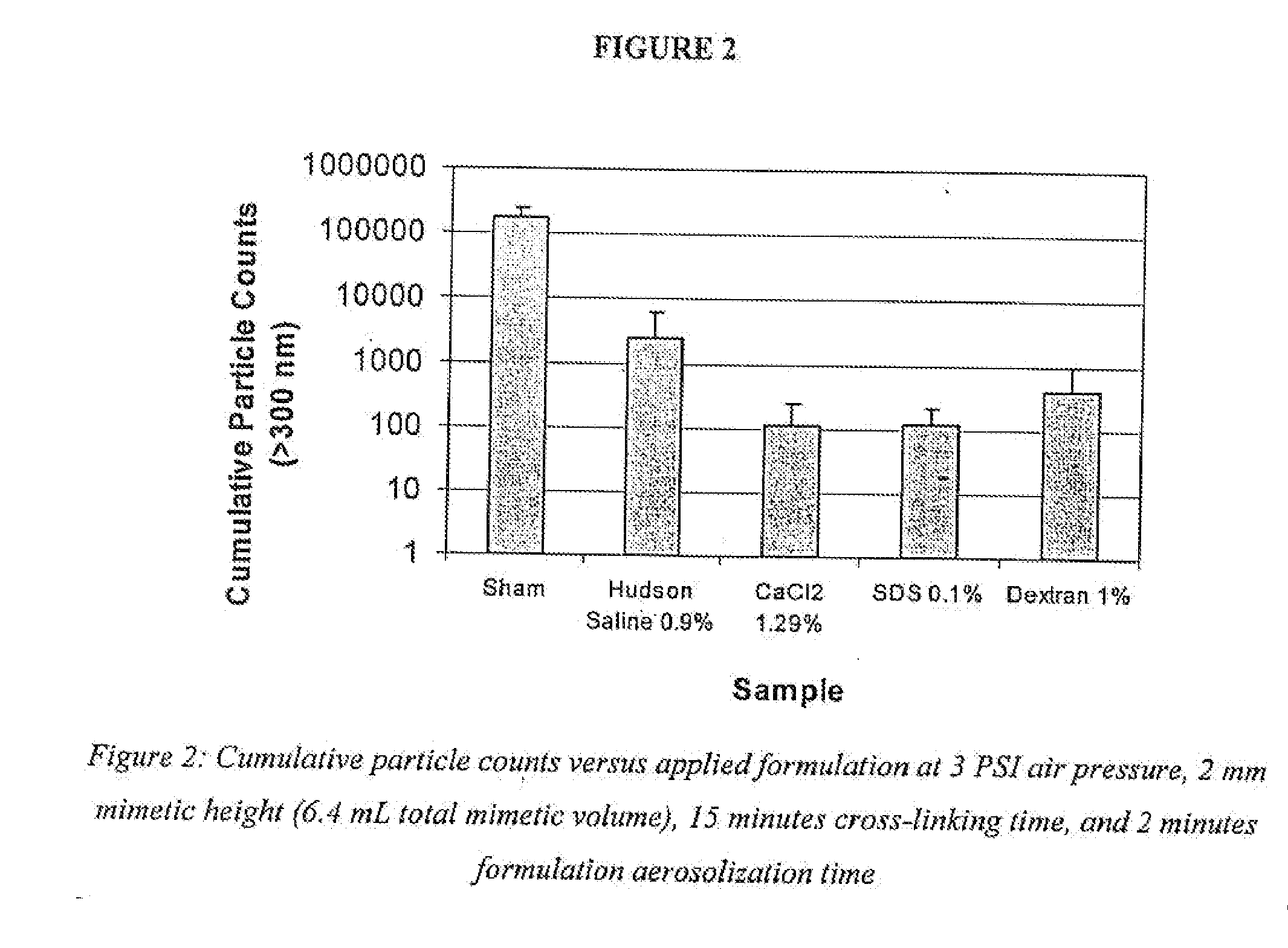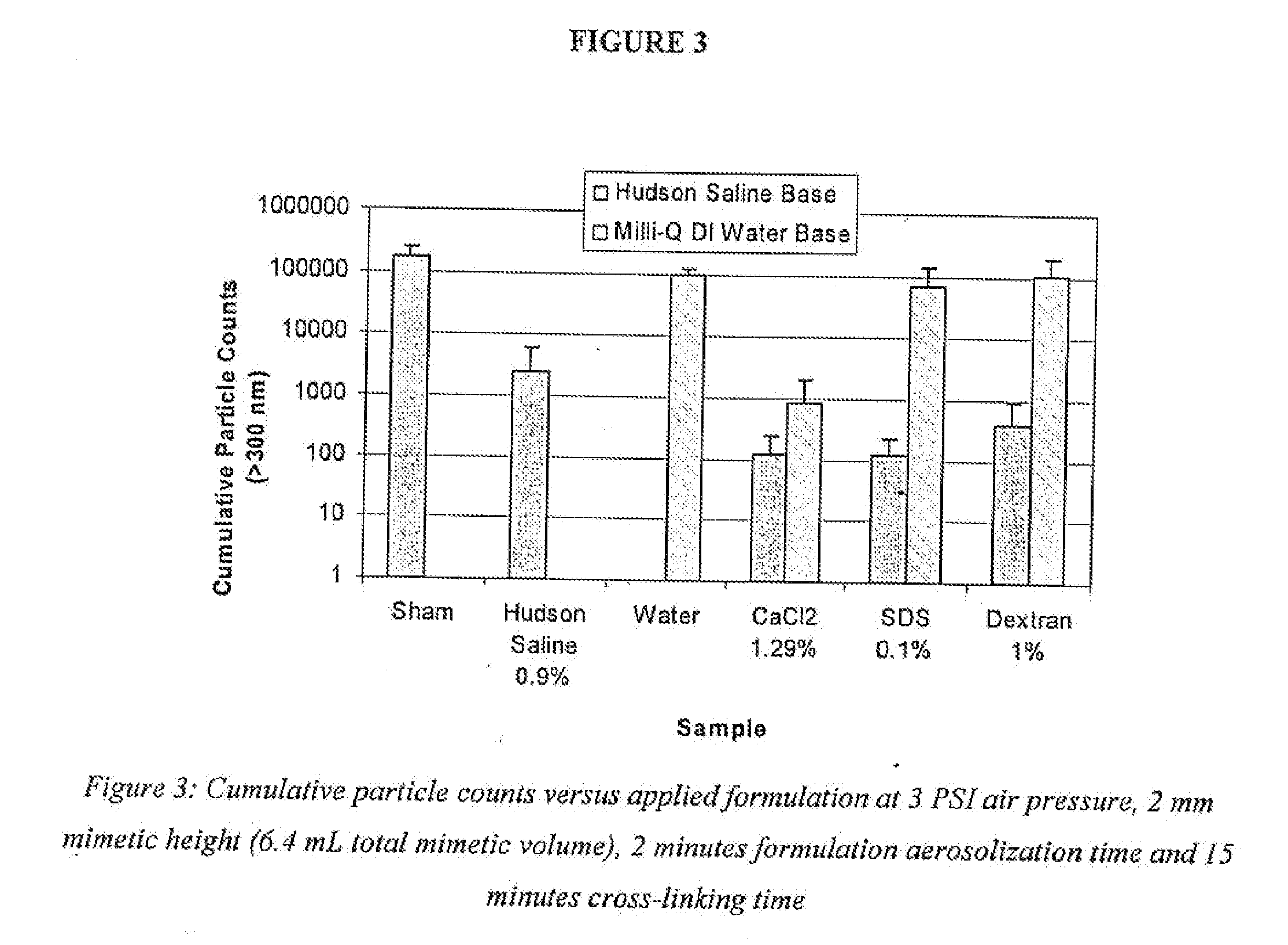Formulations for alteration of biophysical properties of mucosal lining
a technology of biophysical properties and forms, applied in the direction of aerosol delivery, antibacterial agents, inorganic non-active ingredients, etc., can solve the problems of high mortality rate of elderly and immunocompromised populations, high incidence of viral and bacterial infections, epidemic proportions, etc., to reduce the spread, easy to ionize, and alter the biophysical properties of the mucosal lining
- Summary
- Abstract
- Description
- Claims
- Application Information
AI Technical Summary
Benefits of technology
Problems solved by technology
Method used
Image
Examples
example 1
In Vitro Study Using the SRM Apparatus on the Effect of Different Formulations on Number of Particle Counts
[0111] Four formulations were tested in vitro using the SRM apparatus described above and compared against the mucus mimetic alone (sham) which was used as a reference. The mucus mimetic production and the SRM method described above were used in each experiment. The following formulations were tested: (1) 0.9% isotonic saline, (2) 1.29% calcium chloride (CaCl2) dissolved in 0.9% isotonic saline solution, (3) 0.1% sodium dodecyl sulfate (SDS) dissolved in 0.9% isotonic saline solution, and (4) 1% dextran dissolved in 0.9% isotonic saline solution. The mimetic height applied onto the trough was maintained at a constant height of 2 mm (6.4 ml total mimetic volume) for all tests. The mimetic was crosslinked for 15 minutes and each formulation was then aerosolized onto the mimetic using the Aeroneb Go (Aerogen, Mountain View, Calif.) for 2 minutes prior to the test. Each test was r...
example 2
Effect of Formulations (In Saline and Aqueous Solutions) on the Reduction of Exhaled Aerosol Particles as Measured In Vitro Using the SRM Apparatus
[0113] To further understand the mechanism underlying the particle suppression, formulations were prepared both in deionized (DI) water and saline. The mucus mimetic production and the SRM method described above were used in each experiment. The mimetic height applied onto the trough was maintained constant at 2 mm (6.4 ml total mimetic volume) for all tests. The mimetic was crosslinked for 15 minutes and each formulations was then aerosolized onto the mimetic using the Aeroneb Go (Aerogen, Mountain View, Calif.) for 2 minutes prior to the test. Each test was repeated at least three times and the average cumulative particle counts and standard deviation values were then calculated. The results are graphically depicted in FIG. 3.
[0114] As shown in FIG. 3, when the saline used in a given formulation is replaced with deionized (DI) water, ...
example 3
Conductivity Values of Different Formulations and the Effect of the Formulation Conductivity on the Cumulative Particle Counts as Measured In Vitro Using the SRM Apparatus
[0115] To determine the effect of the charge / conductivity of a formulation on the suppression of particle formation, the conductivity of different formulations was measured and plotted against the cumulative particle counts. The following ten formulations were tested: (1) saline 0.45%, (2) isotonic saline 0.9%, (3) saline 1.45%, (4) CaCl2 in isotonic saline (1.29%), (5) CaCl2 in DI water (1.29%), (6) CaCl2 in DI water (1.87%), (7) SDS in isotonic saline (0.1%), (8) SDS in DI water (0.1%), (9) Dextran in isotonic saline (1%), and (10) Dextran in DI water (1%). The conductivity value for each of the different formulations and for mucus mimetic was measured using the Brookhaven ZetaPALS zetasizer (Brookhaven Instruments, Holtsville, N.Y.). This instrument measures the zetapotential of a given solution / formulation by ...
PUM
| Property | Measurement | Unit |
|---|---|---|
| conductivity | aaaaa | aaaaa |
| conductivity | aaaaa | aaaaa |
| conductivity | aaaaa | aaaaa |
Abstract
Description
Claims
Application Information
 Login to View More
Login to View More - R&D
- Intellectual Property
- Life Sciences
- Materials
- Tech Scout
- Unparalleled Data Quality
- Higher Quality Content
- 60% Fewer Hallucinations
Browse by: Latest US Patents, China's latest patents, Technical Efficacy Thesaurus, Application Domain, Technology Topic, Popular Technical Reports.
© 2025 PatSnap. All rights reserved.Legal|Privacy policy|Modern Slavery Act Transparency Statement|Sitemap|About US| Contact US: help@patsnap.com



